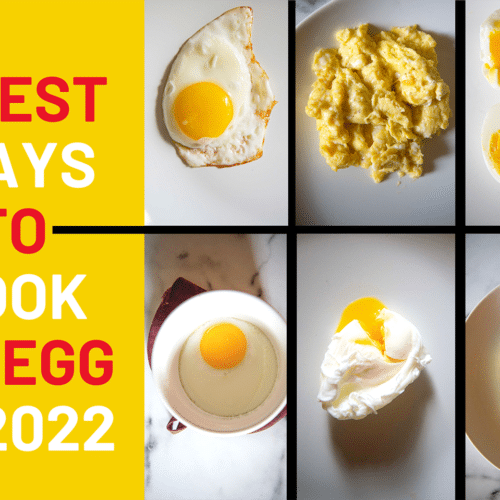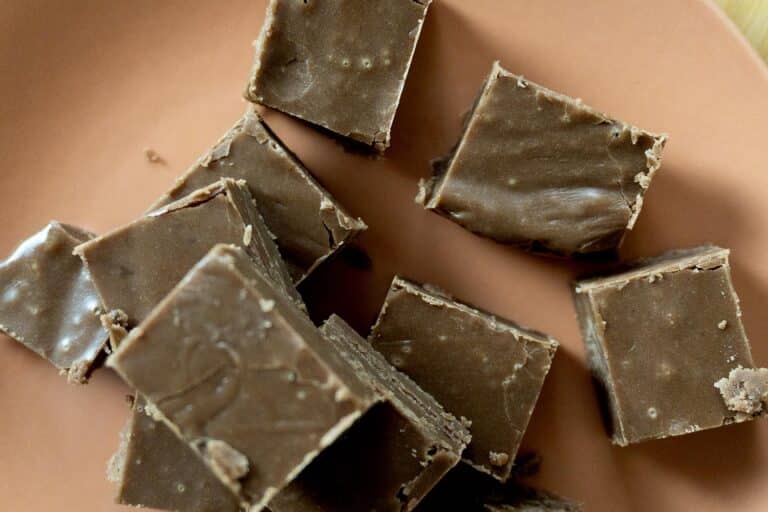Six Different Ways to Cook Amazing Eggs
Learn 6 different ways to cook eggs and lots of tasty ways to serve them for breakfast, lunch, and dinner.
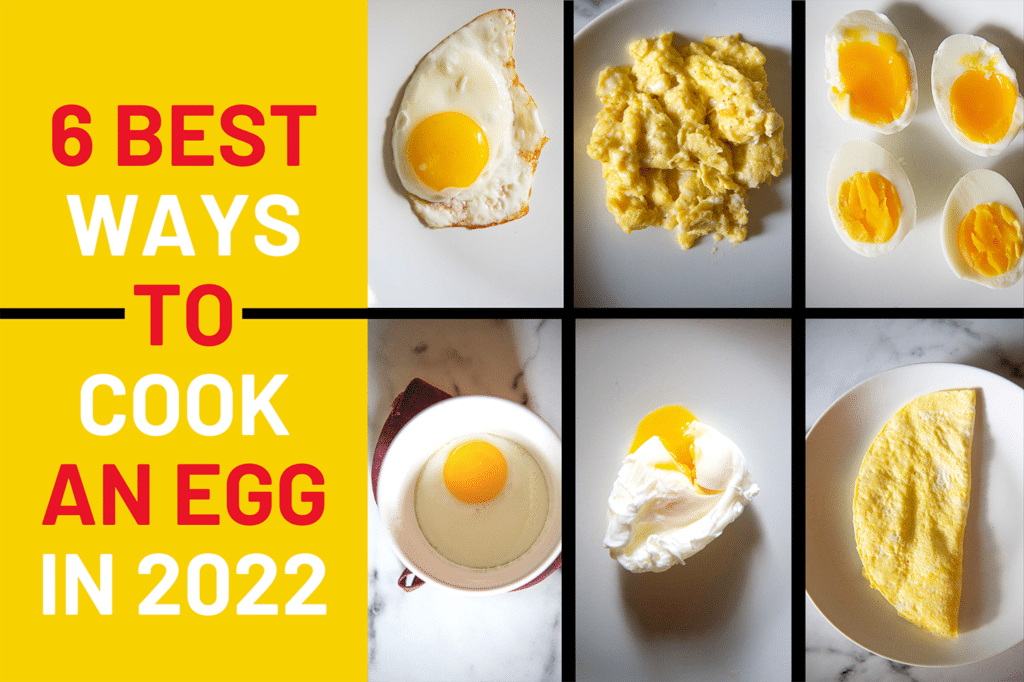
The humble egg- inexpensive, delicious, packed with protein and nutrients, and easy to make. Add an egg to any dish and suddenly it’s transformed into a full meal.
Like a lot of folks, eggs make me think of breakfast. When I was a kid, on the weekends, my Dad would make the softest, tastiest scrambled eggs. When my Mom made weekend breakfast, she would make poached eggs on toast- always a treat.
Eggs make me think of holidays like Thanksgiving and Christmas, where in the South there is always a tray of deviled eggs on the table that quickly gets devoured.
Eggs make me think of my senior year of college when scrambled eggs were my go-to drunk food when I came home at 2 am. Weird, I know. But hey- eggs are cheap.
While there are so many different ways to cook eggs for breakfast, eggs are far more than just a breakfast food. Here are 6 essential, simple ways to cook eggs plus dozens of delicious egg dishes that you will love.
Scrambled
Scrambled is one of the most popular ways to eat eggs. They are usually whipped, beaten or stirred together typically with butter, oil, salt, or other ingredients.
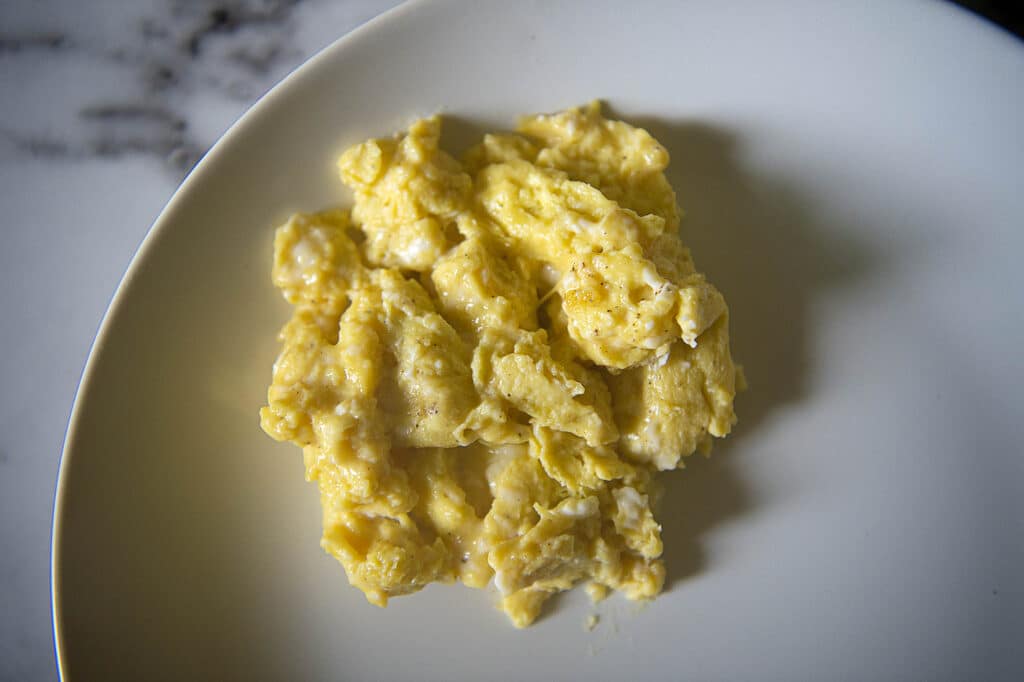
There are so many different variations depending on what part of the world you’re from. In Turkey, menemen is a staple breakfast dish of slow cooked scrambled eggs in tomatoes, onion, and peppers served with bread for dipping. The French love to cook theirs with cream, chives, and butter.
In India, egg bhurji is a popular dish- scrambled eggs with chiles, onions, tomatoes and spices. A British dish, called Scotch woodcock, consists of scrambled eggs on toast with anchovy paste.
How to make them
For basic, scrambled eggs, break eggs into a bowl and whisk together with some salt and pepper. Melt butter in a skillet over medium-low heat and pour in eggs.
As they begin to set, use a spatula to gently fold the eggs together to create soft curds. Cook until desired doneness.
Personally, I love scrambled eggs “wet,” meaning they are slightly underdone and soft. Other folks prefer their scrambled eggs cooked more, creating a dryer egg. Both are correct and delicious.
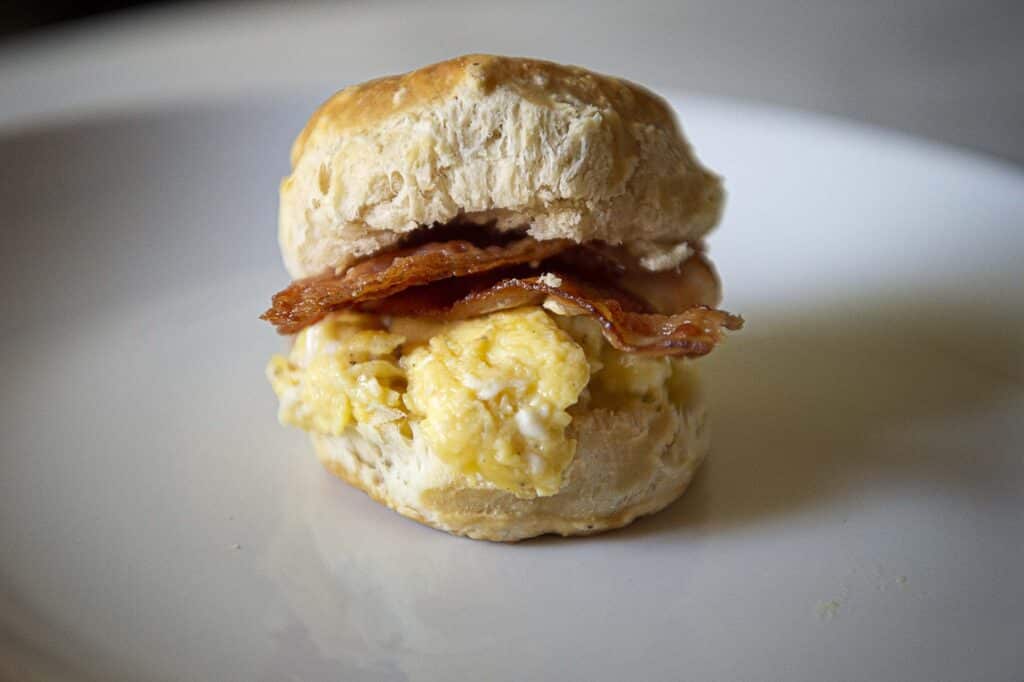
Ways to serve them
- In a biscuit: serve with sausage, bacon, ham, or any desired protein with cheese on a biscuit.
- Mix in soy sauce, mirin, and a little dashi to your eggs and then cook, seasoned like tamagoyaki, the rolled Japanese omelet. Enjoy with rice. I make this all the time and could quite literally eat this everyday.
- In breakfast tacos or a breakfast burrito
- Veggie egg scramble. This healthy breakfast is a great way to use up produce before it goes bad and get a good serving of veggies in. I like to use bell peppers, broccoli, onion, jalapeno, zucchini, and tomato.
- Tex-Mex migas, a popular Tex-Mex dish made with chopped corn tortillas, eggs, cheese, tomatoes, onions, and jalapeños. It’s filling, comforting, and delicious.
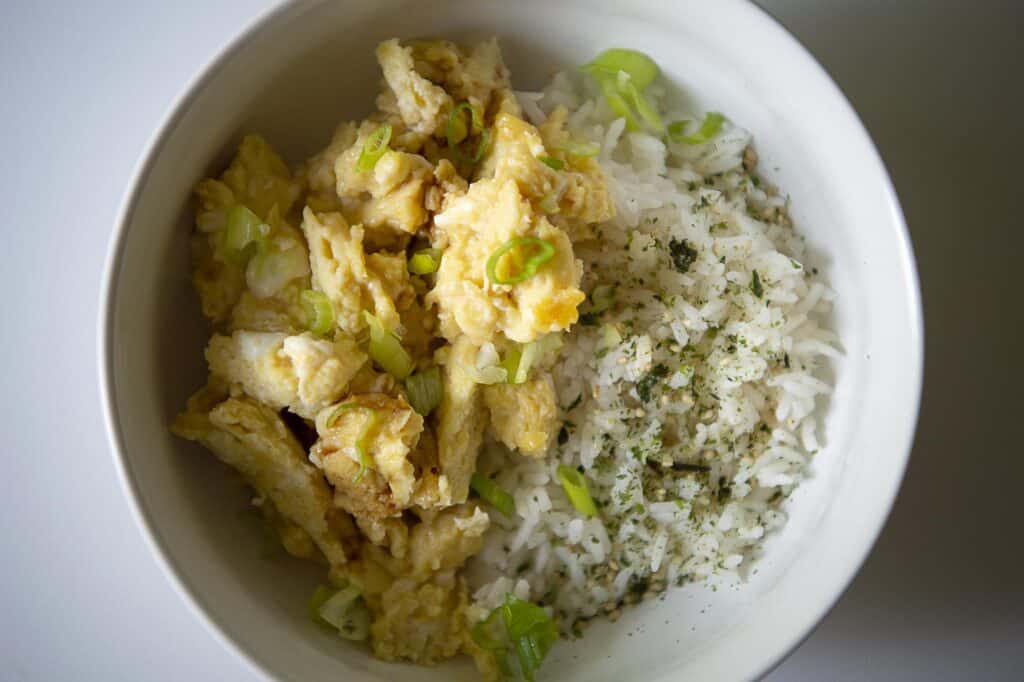
Poached
Creamy yolks, slightly firm whites- what’s not love about a beautiful poached egg? This type of egg is gently cooked outside of its shell in barely simmering water.
Poached eggs are a great low calorie way to prepare eggs since you don’t need oil or butter to cook them like you would with fried or scrambled eggs.
This might seem intimidating to cook at home but they’re actually very simple. If you can boil water, you can poach an egg.
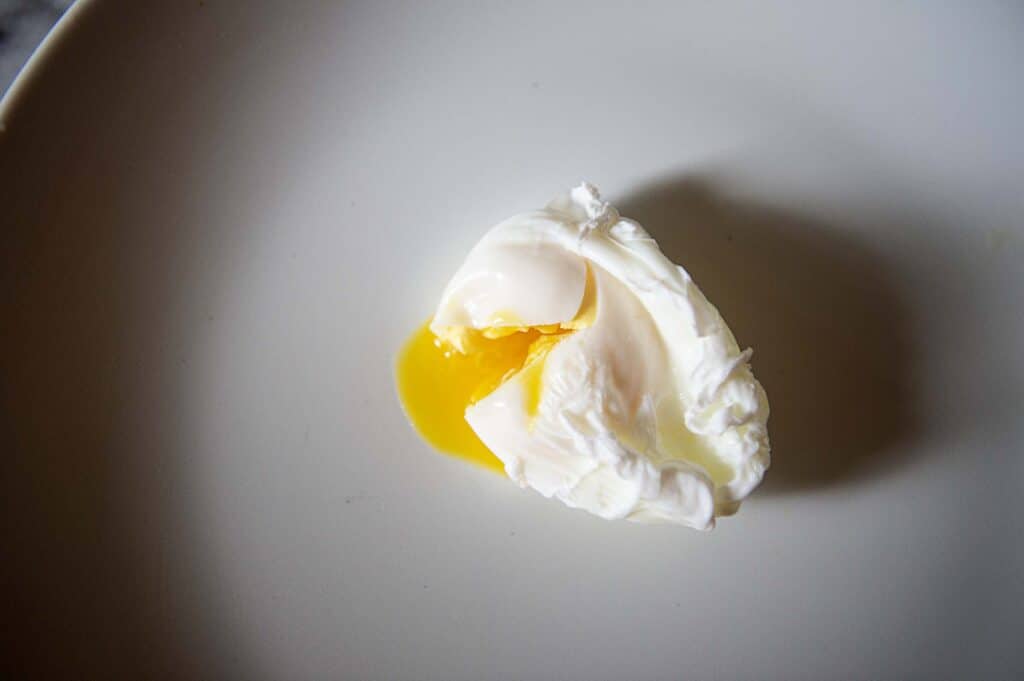
How to make them
Very minimal equipment is needed to make poached eggs- a pot and a slotted spoon. First, bring a pot of water to a very gentle simmer.
Once simmering, add a tablespoon of vinegar. I like to use rice vinegar, but white vinegar works fine. Have no fear- vinegar won’t affect the taste at all.
This is where science comes in. Vinegar helps the egg whites congeal faster meaning less risk of the whole egg just dispersing into the water.
You certainly don’t have to add vinegar. Personally, I embrace this lil science moment to up my chances of poaching my egg properly.
Using a whisk or spoon to vigorously whisk the water, create a whirlpool (this helps the egg hold its shape). Gently slide the egg into the whirlpool.
If some of the egg white spreads out, gently push it in so it curls around the yolk. Cover the pot, turn the heat off, and let sit for 5 minutes. Use a slotted spoon to gently lift the egg out and set on a paper towel to drain.
Ways to serve them
- On top of a bed of grilled or roasted asparagus.
- On toast: top onto a piece of buttered toast or avocado toast.
- Slide a poached egg onto this cold vegetarian soba noodle dish for an extra boost of protein and richness.
- Make Shakshuka, a North-African style poached eggs in a spicy, simmering tomato sauce served with bread for dipping.
- Make eggs Benedict: a classic way to use a poached egg. The egg goes on top of a toasted English muffin drowned in a rich, delicious Hollandaise sauce.
Boiled
A boiled egg is an entire egg cooked in its shell that has been boiled until the yolk and white have been cooked until desired doneness.
You can make soft or hard boiled eggs. Both cooking methods are the same, but the time is different. A 6 minute boil time will yield soft whites with liquid yolk, and a 12 minute boil will create a firm white and yolk.
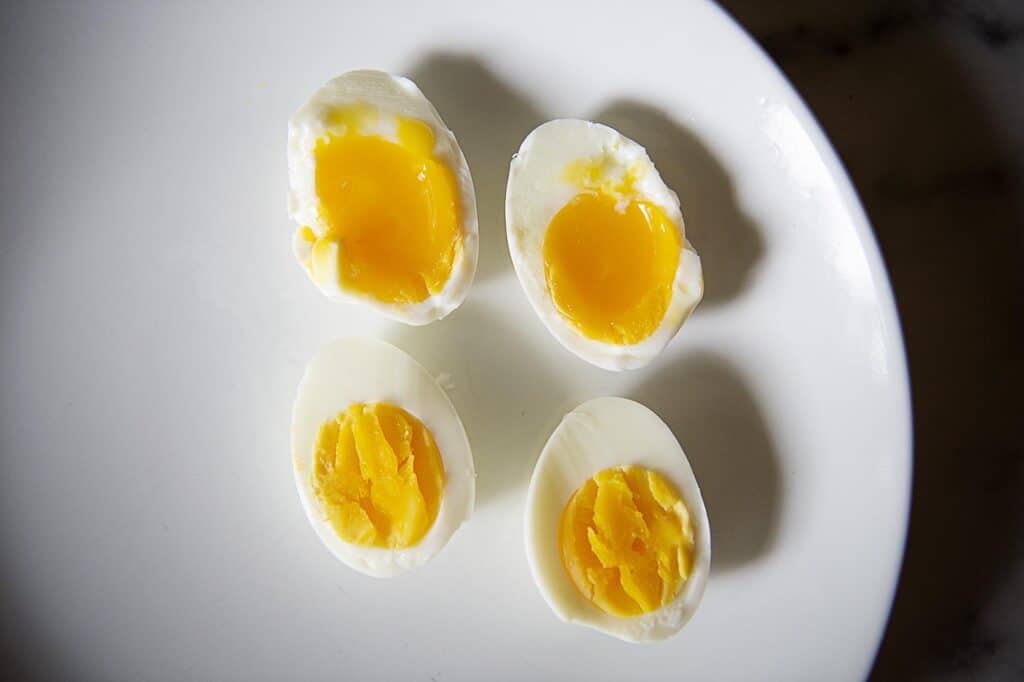
Normally fresh is best when it comes to food, but in this case use older eggs to boil them. Older eggs are far easier to peel than fresh ones.
When my mid-morning snack craving hits I turn to my old reliable friend, the boiled egg. (Can I offer you an egg in this trying time?)
Are boiled eggs good for you? Absolutely. Boiled eggs are a nutrient-dense, low calorie food. They’re an excellent source of lean protein. Plus, they’re packed with calcium, zinc, and other important nutrients.
Boiled eggs go way beyond a snack or popular breakfast. Check out below all the ways you can use boiled eggs for breakfast, lunch, dinner, and snacks.
How to make them
Bring a pot of water to a gentle boil. Once boiling, use a spoon to carefully add an egg or multiple eggs to the pot. Cover the pot and turn the heat off.
If you want a soft boiled egg, set a timer for 6 minutes. If you want a firmer egg, set a timer anywhere from 7 – 12 minutes, 12 being completely cooked.
After the amount of time you choose, remove from the pot and place into an ice water bath or run under cold water until cool enough to handle. This is important because it also stops the cooking process.
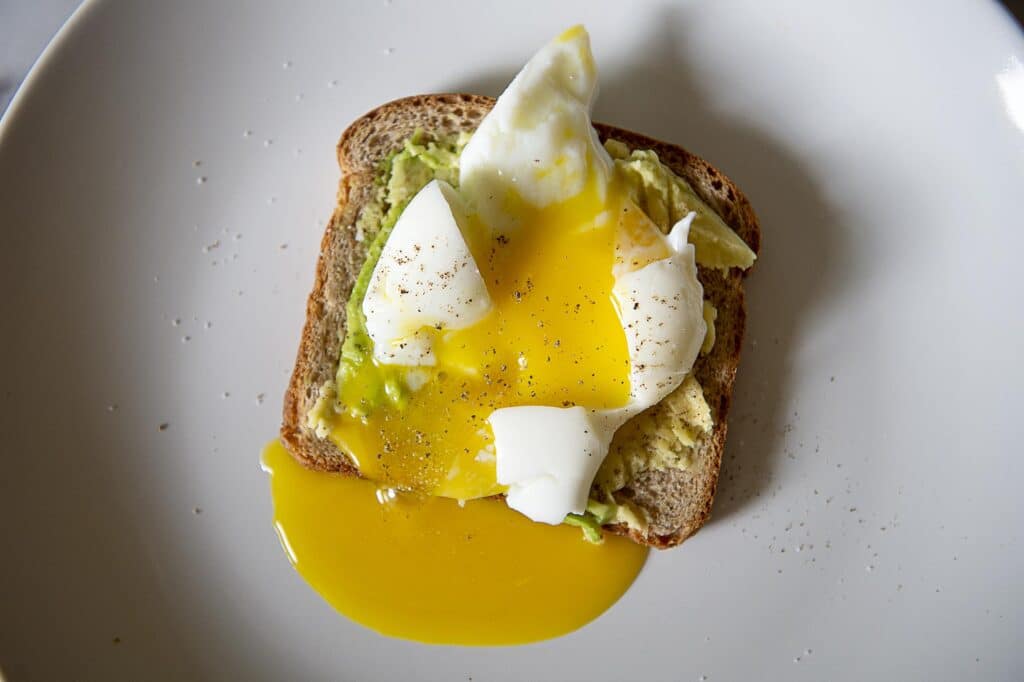
How to serve them
- Delicious deviled eggs.
- Use in a South Indian egg curry.
- Make soy sauce eggs- a great topper for ramen or served simply over rice.
- Pickle ‘em: if you’ve never had pickled eggs you’re missing out.
- Niçoise salad: this salad comes from Nice, France and is a healthy, light summer meal. This salad consists of boiled eggs, tomatoes, olives, anchovies or tuna (sometimes with cooked green beans and potatoes too) dressed in a vinaigrette.
Fried
What’s simpler than cracking an egg and dropping it into a hot pan? Not much! It’s easy to see why fried eggs are eaten all over the world, for breakfast, lunch, and dinner.
In North America we use these four different terms for styles of fried eggs: sunny side up, over easy, over medium, and over well (or over hard).
- Over easy (or over light): cooked briefly on both sides so the white is fully cooked but the yolk is runny.
- Over medium: cooked briefly on both sides so the yolk is soft and near liquid in the center with a fully cooked egg white.
- Over well (or over hard eggs): cooked on both sides with the yolk and white intact.
- Sunny side up: usually cooked on one side until the white is set but the yolk remains liquid. One method is to use a spoon to gently splash the hot cooking fat or oil over the whites to thoroughly cook, also called basted eggs. Another method is to cover the pan with a lid while cooking and add a splash of water before finishing for a less runny egg.
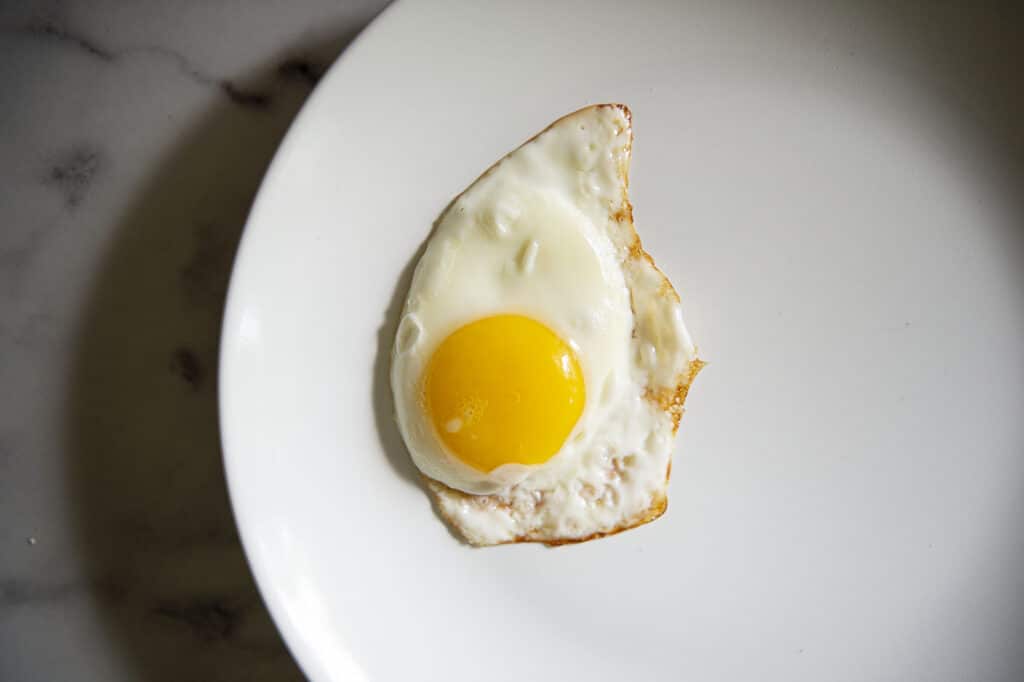
Over easy vs sunny side up: These two are very similar as both have a runny yolk. The main difference is a sunny side up egg is fried only on one side, with the yolk up. An over easy egg is flipped, but the yolk is still runny.
Over easy vs over medium: The difference between these two is their cooking time, which results in a different consistency of yolk. An over easy egg has a very runny yolk, while over medium is flipped and cooked a little longer for a slightly runny yolk.
How to make them
Sunny side up egg: Heat your preferred oil or fat in a skillet over medium heat. Carefully crack the egg into the pan. Cook until the whites are set but the yolk is still runny, about 3 – 4 minutes.
Alternatively, spoon hot oil over egg whites to cook through or cover the pan with a lid to cook the egg whites.
How to make over easy eggs: Flip over the sunny side up egg and cook for an additional 10 – 30 seconds.
How to make over medium eggs: follow directions above and cook for 30 – 60 seconds, and 1 – 2 minutes for eggs over hard.
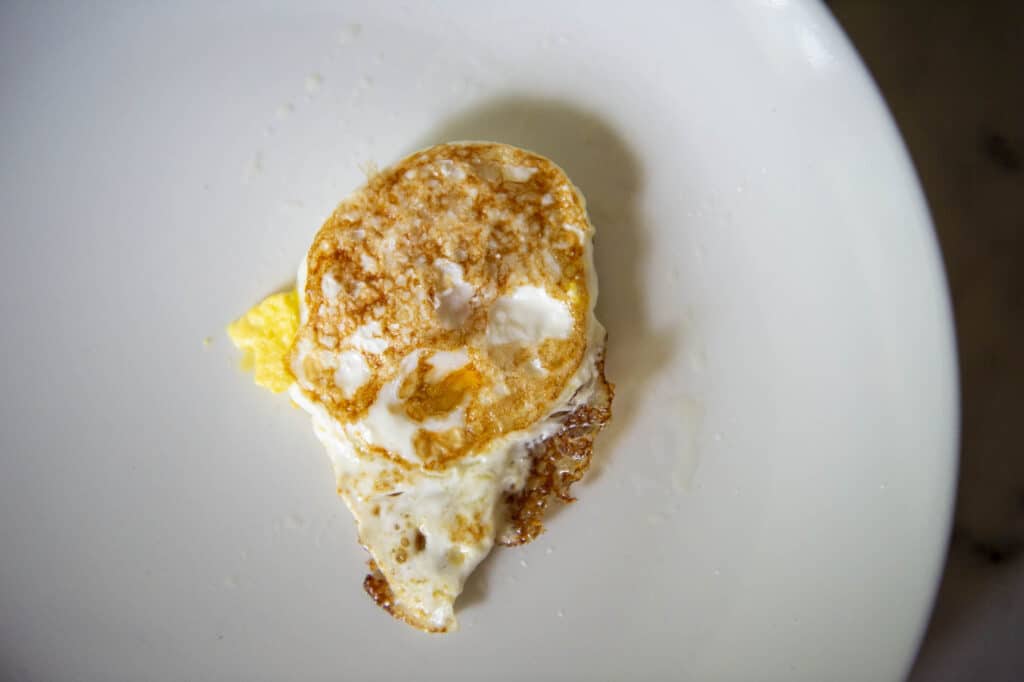
How to serve them
- Egg in a basket. Use a cookie cutter or glass to cut out a hole in a piece of bread. Butter it up, put it in a pan, add your egg, give it a flip after a couple minutes, hit it with s and p, and you’ve got yourself a delicious, comforting breakfast. Don’t toss the circle cutout- fry that too and use it for dipping in your egg.
- Add chimichurri to your fried eggs: once your eggs are in the pan, simply spoon in chimichurri, cover with a lid, and let the eggs cook.
- Top a burger: up your burger game by adding a runny egg for an extra boost of savoriness.
- BLT egg sandwich. A BLT is a beautiful sandwich as is, but adding an egg makes it even better.
- Make a breakfast hash with sweet potato and eggs. Make little wells in the veggies, crack the eggs into the wells, then cover with a sheet pan until slightly cooked but still deliciously runny.
Omelet
An omelet, or omelette, is made from beaten eggs, fried in butter or oil without stirring, often folded around fillings such as vegetables, proteins, and herbs.
It is believed that the earliest omelets were made in ancient Persia, and then in the 16th century the French started using the term omelet.
There are variations of omelets all over the world. American omelets are usually thick, sturdy, and filled with a variety of proteins, cheese and vegetables. By comparison, a French omelet is delicate and silky while the inside is moist and creamy.
In Spain, there is tortilla de patatas, a type of frittata. Omelet in Iran called kuku sabzi and made with generous amounts of fresh herbs like dill, cilantro, and chives. A Japanese omelet, called tamagoyaki, happens to be cooked in a rectangular-shaped pan, rolled and then cut into slices.
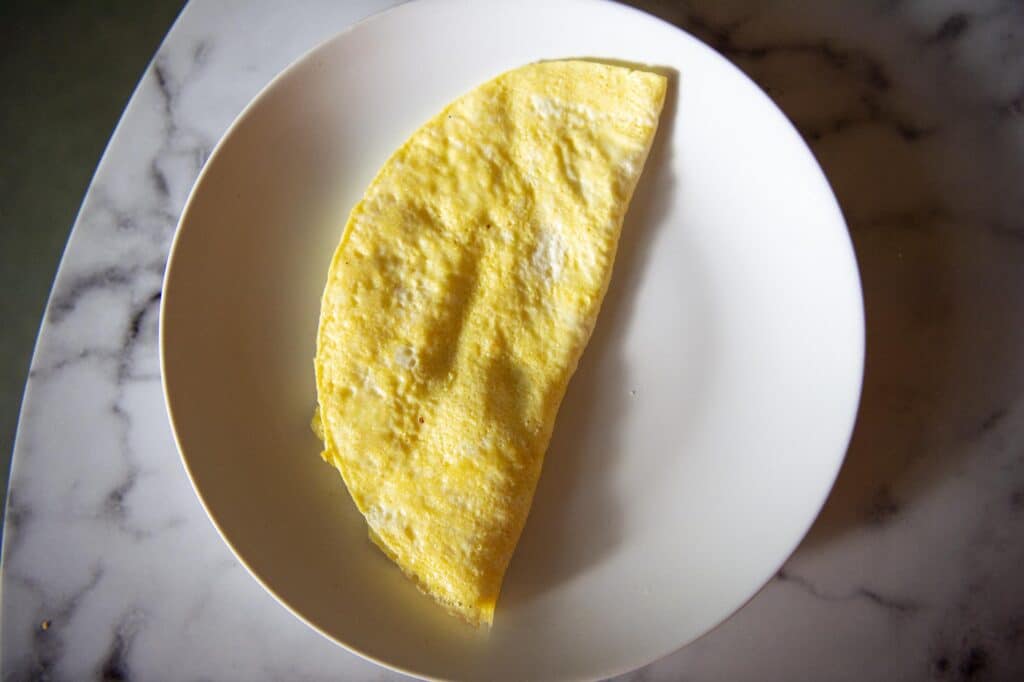
How to make them
- American omelet: whisk eggs with salt and pepper and set aside. Over medium high heat, cook any desired fillings (vegetables, meats, etc.) until softened and cooked through. Transfer to a bowl. Add butter to the pan and let it melt and coat the pan. Pour in the eggs and quickly shake and swirl so the eggs cover the pan. Let the eggs firm up on the bottom and sprinkle half the eggs with cheese or other toppings. Cook until the top is moist but not runny. Fold in half and slide onto the plate.
- French omelet: whisk eggs vigorously season with salt and pepper. Melt the butter over moderate heat, add the eggs, and sit rapidly with a fork while shaking the pan. Stop stirring once eggs are very softly scrambled, roughly 1 – 2 minutes, and are no longer runny. Remove from heat, tilt the pan, and carefully roll the omelet down over itself so it’s cigar shaped.
- Frittata: an Italian word meaning fried, this is another way to make a different style of omelet. Whisk and season your eggs and add your fillings to the mixture before adding it to the pan. Then pour your mixture into a hot, oven proof pan, and add cheese if you want. Transfer the pan to a 300 – 400° F oven and cook until the edges are golden, roughly 15 – 20 minutes.
Omelet filling variations
- Denver omelet: a classic Denver omelet has ham, bell peppers, onion, and cheese.
- Philly cheesesteak omelet: thinly sliced sirloin with provolone, onions, and peppers
- Pesto, mozzarella, and tomatoes
- Goat cheese with herbs like dill, cilantro, and parsley
- Cheese, bacon and potatoes
- Feta, spinach, and fresh herbs
- Sausage, onion and mushroom
Baked
Baked eggs, called shirred eggs, are eggs baked in a flat-bottomed dish and originate from France. This is a simple, reliable dish that can be cooked in individual ramekins or a double broiler.
Baked eggs are usually cooked in a ramekin, muffin tin, or casserole dish. They are often served in the dish they were baked in.
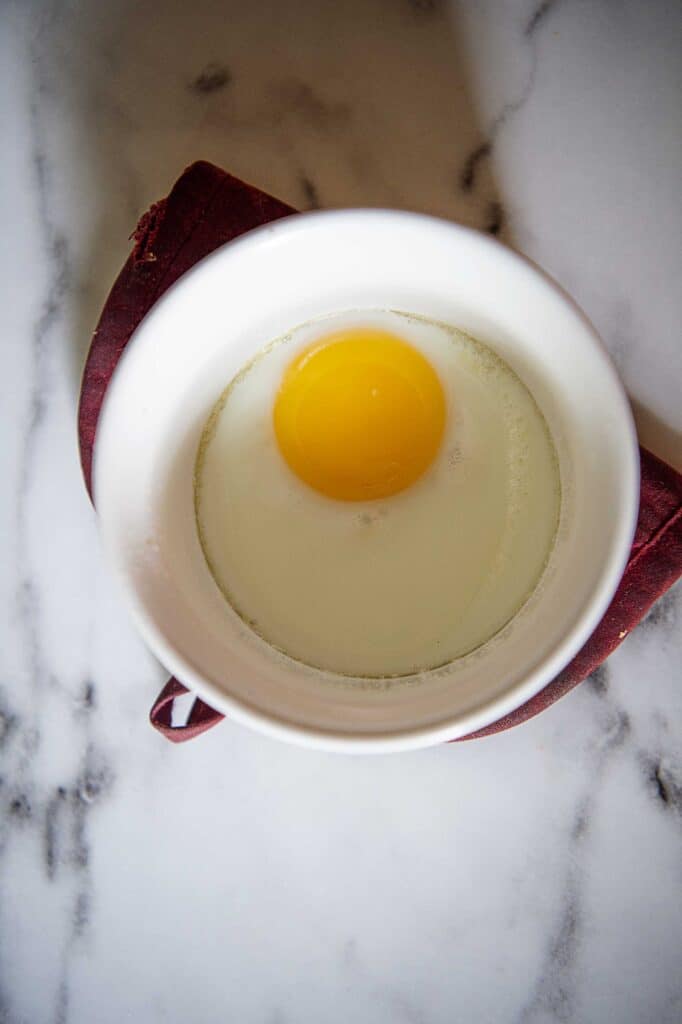
How to make them
Grease pan, ramekin or tin. Crack individual eggs directly into muffin tin or ramekin if using.
Cooking time depends on how you are making the eggs. If cooking individual eggs in a muffin tin or ramekin, your cooking time at 350° F will be 10 – 15 minutes. Be careful not to overcook. The eggs should look a little underdone as you take them out.
Alternatively, scramble eggs in a bowl with seasonings, herbs, and dairy if desired. Add desired other ingredients into dish and pour eggs over. If making a large casserole, bake for 25 – 30 minutes for 350° F.
Baked egg variations
- Eggs in a ramekin: after baked, top with feta, chopped cooked asparagus, and herbs like chives and dill.
- Eggs in a muffin tin: add cooked bacon or sausage and any cooked vegetables, top with an egg, and bake for a delicious, healthy breakfast or snack.
- Make a breakfast casserole to meal prep breakfasts or serve when you have a crowd to feed.
Egg FAQ
How many eggs in a day is healthy?
The American Heart Association recommends up to one egg per day or up to seven per week for most people. Folks with high blood cholesterol, especially those with diabetes or at higher risk of heart failure should consume less than that.
What are the benefits of eating eggs?
Protein. One egg has 6 grams of protein with all nine essential amino acids. That’s important because our bodies can’t make those.
Nutrient dense. Eggs have more nutrients per calorie than most other foods. Nutrients like B12, Phosphorus, Selenium, and antioxidants.
They help your ‘good’ cholesterol. Good cholesterol, called HDL, goes up in people who eat eggs regularly. Of course, the bad- LDL- goes up too, but the individual pieces of each get bigger. This makes it harder for the bad to hurt you, and the good cholesterol to clear it away.
Are eggs good for your brain?
Yes, eggs are among foods that are good for your brain including blueberries, salmon, leafy greens, cruciferous veggies, nuts and dark chocolate. Egg yolks maintain a good source of choline, associated with reducing inflammation and promoting brain function, like maintaining memory.
Which way to cook eggs is healthiest?
Lower heat cooking methods and shorter cooking time cause less cholesterol oxidation and help retain most of the nutrients in eggs. For this reason, poached and boiled eggs (either hard or soft) may be the healthiest to eat. Plus, cooking methods don’t add any extra calories when cooked in water.
But in general, eating eggs cooked any way is very healthy. Pay attention to what you eat with your eggs (ie eating veggies vs bacon) and how many calories you add to your cooking method (ie oil and butter).
Another great egg recipe we would like to mention is Chips Mayai!
- 1 skillet, pot, ramekin depends on cooking method
- eggs
- Bring a pot of water to a gentle boil and carefully lower the eggs in. For a soft boiled egg, set a timer for 6 – 7 minutes. Remove eggs and run under cold water, until safe to handle. Peel and serve warm.
- For hard boiled, set a timer for 12 minutes. Remove eggs and place into an ice water bath to stop the cooking process.
- Bring a pot of water to a bare simmer and add a tablespoon of vinegar (rice, white, or champagne). Use a spoon or whisk to create a small whirlpool and carefully slide egg into water. Turn off the heat and cover pot with a lid for 5 minutes. Scoop out with slotted spoon and drain on a paper towel.
- Sunny side up: Heat butter or oil in a pan over medium heat. Carefully crack the egg into the pan. Let the eggs cook until the whites are firm but yolk is runny, 3 – 4 minutes.
- Over easy/Over medium/Over well: Flip the sunny side egg over and, for over easy- cook for 10 – 30 seconds (runny yolk), for over medium- cook 30 – 60 seconds (yolk slightly runny), for over well- 1 – 2 minutes (fully cooked yolk).
- Whisk eggs together in a bowl. Melt some butter in a pan over medium low heat and pour eggs in. As they begin to set, use a spatula to gently fold and push the eggs into soft curds.
- For a muffin tin or ramekin: Grease dish and crack eggs directly into dish. Cook at 350°F until eggs look slightly underdone, roughly 10 – 15 minutes.
- For a casserole, whisk eggs together in a bowl with seasonings, herbs, and dairy if desired. Sprinkle cooked meats and/or protein in a greased casserole dish. Pour eggs over and top with cheese if desired. Cook at 350° F for roughly 25 – 30 minutes.
- For an American-style omelet, whisk eggs together with salt and pepper. Over medium high heat, cook any desired fillings (vegetables, meats, etc.) until softened and cooked through. Transfer to a bowl.
- Add butter to the pan and let it melt and coat the pan. Pour in the eggs and quickly shake and swirl so the eggs cover the pan. Let the eggs firm up on the bottom and sprinkle half the eggs with cheese or other toppings. Cook until the top is moist but not runny. Fold in half and slide onto the plate.

